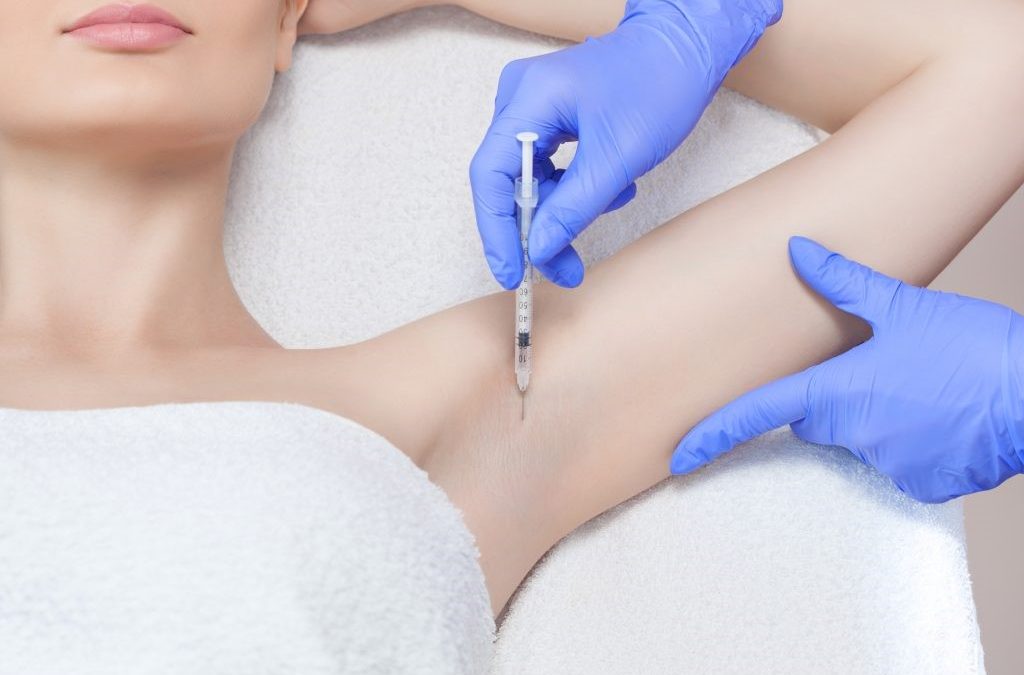Hyperhidrosis
What is hyperhidrosis?
Hyperhidrosis, also called an excessive sweating is the name given to excessive and uncontrollable sweating. This condition happens when you sweat more than what your body needs to regulate your temperature. You may experience sweating when you’re at rest, in cold temperatures or randomly at times when you wouldn’t expect to sweat. It is important to note, there are no guidelines to determine what “normal” sweating is, but if you feel you sweat too much and your sweating has started to interfere with your everyday daily life, you may have hyperhidrosis.
Which areas are usually affected by hyperhidrosis?
The sweating may affect the whole of the body, or it may only affect certain areas. Commonly affected areas include the: armpits, palms, soles of the feet, face, chest, and groin.
Both sides of the body are usually affected equally – for example, both feet or both hands.
What are the types of hyperhidrosis?
There are two types of hyperhidrosis:
Primary hyperhidrosis
In many cases, hyperhidrosis has no obvious cause and is thought to be the result of a problem with the part of the nervous system that controls sweating. This is known as primary hyperhidrosis and is the most common type of hyperhidrosis. It nearly always starts during childhood and adolescence. It can be trigged by exercise, anxiety, hot weather, or spicy food. Some cases of primary hyperhidrosis appear to run in families, which suggests a genetic mutation may be the cause.
Secondary hyperhidrosis
If a cause of hyperhidrosis can be identified, it’s known as secondary hyperhidrosis. Causes of secondary localised hyperhidrosis : pregnancy, some drugs (eg, alcohol, caffeine), overactive thyroid, infections, menopause, obesity, brain tumour, Parkinson disease, diabetes or anxiety. Secondary hyperhidrosis often starts more suddenly than primary hyperhidrosis and tends to affect the whole body. It may cause you to sweat while sleeping.
What is the impact of hyperhidrosis?
The sweating doesn’t usually pose a serious threat to your health, but it can be embarrassing and distressing. It can also interfere with daily activities.
What are the symptoms of hyperhidrosis?
The main symptom of hyperhidrosis is sweating. Typically, the symptoms include:
- Excessive sweating on the palms, hands, armpits, face, trunk
- Some patients may experience extreme flushing
- Wetness on the skin
- Beads of fluid dripping from your cheeks or forehead
- Damp clothing
- Slippery hands while shaking hands
- Body odour
What are the complications of hyperhidrosis?
- Skin infections
- Skin changes such as cracked skin on the feet
- Skin maceration
- Skin blistering
- Itching
- Body odour
- Hyperhidrosis can also have an emotional impact on your life. You may find yourself changing your routine to hide your symptoms from others. Constant sweating may be so severe that you avoid common actions, such as lifting your arms or shaking hands. You may even give up activities you enjoy avoiding problems or embarrassment from excessive sweating
How is hyperhidrosis diagnosed?
Hyperhidrosis is usually diagnosed clinically, and a test can be used to localise a precise location of hyperhidrosis:
- Starch-iodine test
- Paper test
- Screening tests in secondary hyperhidrosis
How is hyperhidrosis treated?
Excessive sweating can be challenging to treat. Changing your lifestyle cannot cure primary hyperhidrosis (hyperhidrosis with no obvious cause), but it can improve your symptoms and help your confidence. There isn’t one form of treatment that works well for everyone. Following some of these maybe helpful:
- Avoid triggers that make you sweat more (eg caffeinated food and drink)
- Avoid tight clothing
- Wear sweat absorbing clothing
- Showering or bathing more often
- Use absorbent insoles
- If a regular antiperspirant doesn’t control your sweating, your GP may prescribe or suggest a stronger one for you
You may be prescribed a type of medicine called an anticholinergic or antimuscarinic. These work by blocking the effects of a chemical called acetylcholine, which the nervous system uses to activate the sweat glands.
Ionophoresis is used for palms, soles and armpits but it is not always effective.
Botulinum toxin can be injected into the skin in areas of the body affected by hyperhidrosis. This helps reduce sweating in these areas by blocking the signals from the brain to the sweat glands. Around 15-20 injections are given in the affected areas of the body, such as the armpits, hands, feet or face. The procedure usually takes about 30-45 minutes in total. The effect of the injections usually lasts for several months, after which time the treatment can be repeated if necessary.
In a few cases where hyperhidrosis is particularly severe and treatment hasn’t been successful, surgery may be recommended:
- Endoscopic thoracic sympathectomy (ETS) is the most widely used type of surgery to treat hyperhidrosis. It’s usually used in cases affecting the palms or armpits.
- Excessive sweating under the arms may occasionally be treated with a procedure to remove or destroy the sweat glands in the armpits.
What is the outlook for hyperhidrosis?
Localised primary hyperhidrosis tends to improve with age. Treatments can help you reduce your symptoms and improve your quality of life.The outlook for secondary localised or generalised hyperhidrosis depends on the cause. Not all cases of generalized hyperhidrosis have a cure.

Recent Comments